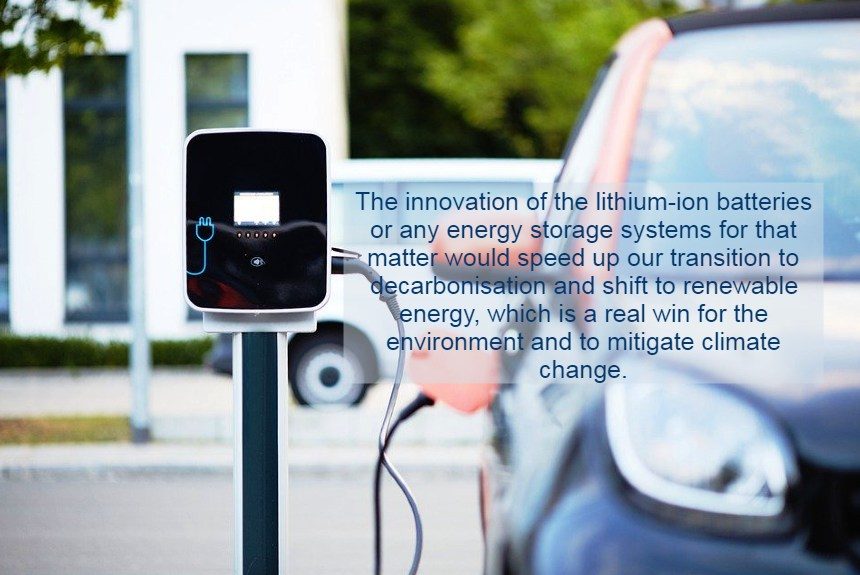The “million-mile battery” is the latest development on EV batteries. Thanks to continuous research and development, lithium-ion batteries are constantly improving.
Its batteries account for 30 per cent of the price of electric cars. No wonder EV manufacturers guarantee that the battery will last at least eight years or 200 thousand kilometres (What the Million, 2020), which can be considered a good run for a car even for its internal combustion engine (ICE) counterpart.
The million-mile battery will be a game-changer. What the Million (2020) explains:
- According to a recent Economist article, major EV manufacturers – Tesla, GM, and the Chinese company Contemporary Amperex Technology, are hinting that the million-mile battery will soon hit the markets. The fact that electric vehicles have been with us for around ten years gives researchers enough data on the battery’s performance and degradation process, allowing them to tweak its faults and make improvements.
- The Economist article describes what GM does to improve its batteries’ duration and energy storage capacity. It says that by using a remote “telematic” monitor, researchers at GM can track how car cells perform in various scenarios – high mileage, extreme temperatures, and environments. They discovered that preventing impurities from getting into batteries extends their life while adding a little aluminium to the nickel-cobalt component of the battery saves on cobalt – the most expensive ingredient in the cell and boosts its energy density, which means reducing the cost of the battery while making it last further with a single charge.
Tesla has partnered with Prof Jeff Dahn of Dalhousie University in Canada to conduct battery research.
In an open-access paper, Prof Dahn and his colleagues explained how this energy-dense million-mile battery works.
The paper explains how they deal with anode-free cell failure by applying electrolyte solutions. It explains further that anode-free lithium metal cells store 60% more energy per volume than conventional lithium-ion batteries.
However, the researchers have also highlighted some of the downsides of increased capacity storage, such as that “these cells tend to experience rapid capacity loss and short cycle life” and some safety issues on the anode-free cells related to the metallic lithium inside. Dahn and his team say that an optimized electrolyte can extend the life of the anode-free battery cells by up to 200 cycles (Louili et al., 2020).
The findings of Dahn and his team’s research are especially vital in increasing the life and range of EV batteries. The results will also have implications for the battery’s potential uses, aside from running the EV cars alone.
Are there more to the million-mile batteries than for EV use alone?
The next generation of million-mile batteries implies a second life outside an EV car.
Million-mile batteries (2020) explains below:
- According to this article, current EV batteries are performing well anyway and can be helpful after their life inside an EV. Some automakers guarantee that the cells retain 70 per cent of their original capacity after consumers place 100 100,000 on the mileage. Tesla claims that their Model S and X batteries lose less than 20 per cent of their original charge capacity after being driven for 200 thousand miles. At the same time, a Nissan Leaf executive claims that a Nissan Leaf battery will live up to 22 years based on its battery degradation data.
- Hans Eric Melin, the founder of Circular Energy Storage, says it is “very unusual” for a car to be pulled off the road today because its battery has fully degraded. Even with heavily driven vehicles like those used for taxis or Ubers, most of the time, the reason for failure to run is an electrical malfunction, some parts have worn out, or the car has crashed.
- The durability and longevity of EV batteries benefit the environment because a longer battery life means that the carbon emitted during production can be extended for a longer time. It can be repurposed for grid energy storage or as a backup power system for less demanding applications.
- The good news is the battery recycling industries are growing. Reusing cobalt from used batteries to make new ones prevents further mining of these precious minerals. Waste from recycling can be addressed by creating policies that will make recyclers responsible for their waste disposals, the article says.
Continuous innovation of lithium-ion batteries, or any energy storage systems for that matter, would speed up our transition to decarbonisation and shift to renewable energy, which is a real win for the environment and to mitigate climate change.
Read Prof Dahn and colleagues paper on lithium-ion batteries by clicking the link below:
Sources:
What the million-mile battery means for electric cars. (2020, July 30). The Economist. Retrieved from https://www.economist.com/science-and-technology/2020/07/30/what-the-million-mile-battery-means-for-electric-cars
Louli, A. & Eldesoky, Ahmed & Weber, Rochelle & Genovese, M. & Coon, Matt & deGooyer, Jack & deng, Zhe & White, R. & Lee, Jaehan & Rodgers, Thomas & Petibon, Rémi & Hy, S. & Cheng, Shawn & Dahn, J.. (2020). Diagnosing and correcting anode-free cell failure via electrolyte and morphological analysis. Nature Energy. 1-10. 10.1038/s41560-020-0668-8.
Stone, M. (2020, July 6) ‘Million-mile’ batteries are coming. Are they are revolution. Grist. Retrieved from https://grist.org/energy/million-mile-batteries-are-coming-are-they-really-a-revolution/



Leave a Reply